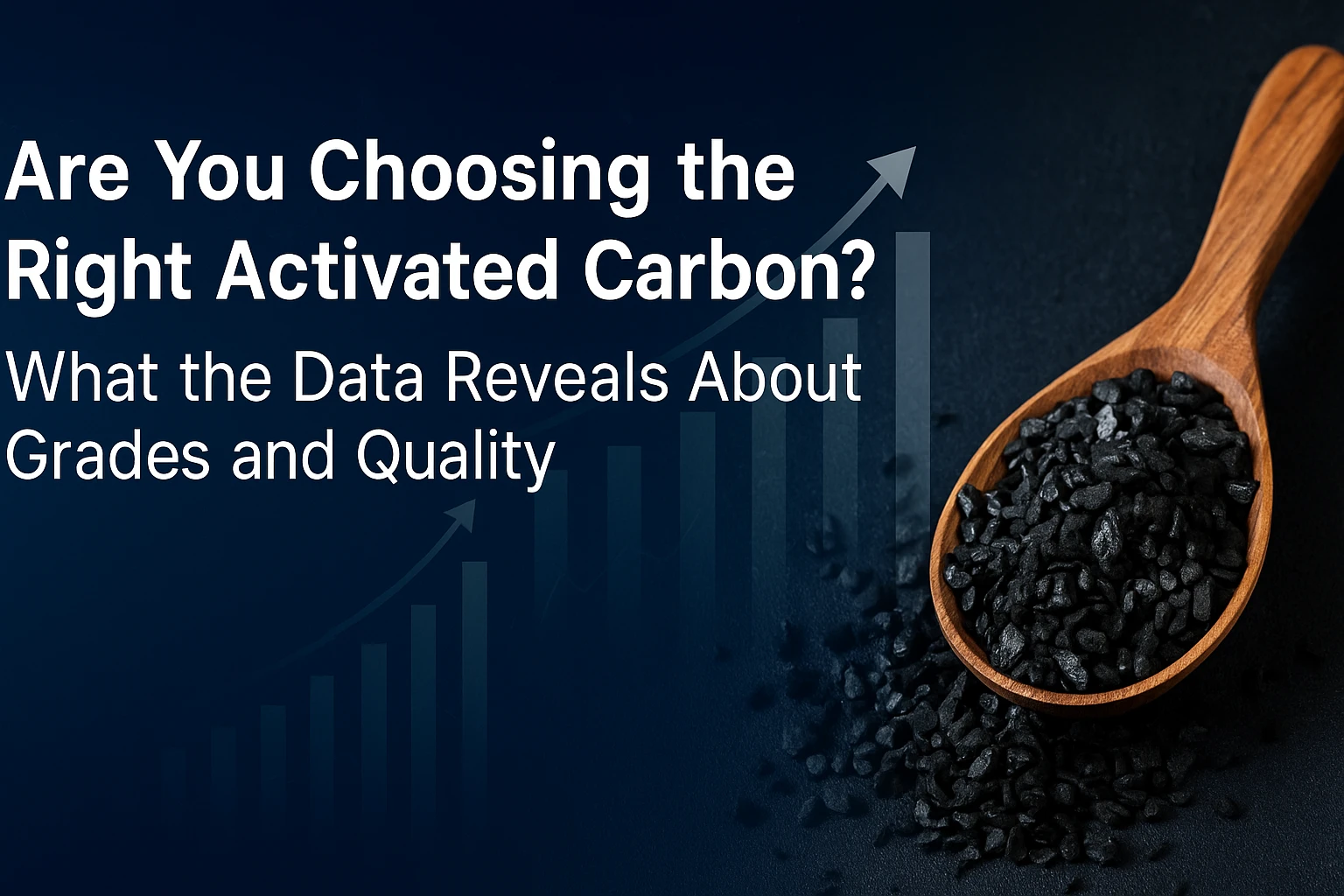1. Introduction: The Value of Choosing the Right Activated Carbon
Activated carbon has evolved into the backbone of water purification, food safety, air filtration, and pharma processes. Projected to eclipse $7.9–10.04 billion globally by 2025, the market spans diverse grades and performance profiles. Each grade performs differently by surface area, adsorption capacity, and chemical reactivity. Choosing the wrong carbon can lead to costly inefficiency, poor regulatory compliance, or unsafe outcomes.
2. Understanding Grades: From Powdered to Granular & Specialty Carbon
Most activated carbon is sold as powdered (PAC), granular (GAC), or specialty forms like extruded and impregnated carbon. PAC is favored for rapid adsorption in food/beverage and chemical treatment; GAC offers reactivation/reusability for water, wastewater, and gas purification. Specialty carbons, customized by pore structure, particle size, or surface modification, are rising fast in niche markets—pharma, semiconductor, and nutraceuticals. Grade selection hinges on intended application, raw material (coconut shell, coal, wood), and cost constraints.
3. Key Quality Indicators: Surface Area, Pore Structure, and Performance
Performance isn’t just about grade—buyers must verify:
-
BET surface area (m²/g): Higher is better for most adsorption needs
-
Pore volume & distribution: Macropores for large molecules (colorants, organics), micropores for small contaminants (chlorine, VOCs)
-
Purity & ash content: Low impurities for food/pharma, measured by supplier documentation
-
Reactivation potential (GAC): Supports sustainable, lower-cost long-term operations
Top-performing carbons, like Norit GAC 1240 or coconut-shell variants, typically feature high adsorption and minimal byproduct contamination.
4. Application Data and Real-World Efficacy
Peer-reviewed studies show GAC and custom PAC grades outperform generic carbons in removing specific organic, pharmaceutical, and heavy metal contaminants from water and food streams. Selection should match the contaminant, pH, and process design. Ongoing laboratory validation and pilot testing save buyers thousands by avoiding over- or under-engineered filtration systems.
5. Market Trends, Supplier Insights, and Buyer Best Practices
-
The Asia-Pacific market (notably China, India, Indonesia) is driving innovation and exports, but quality varies widely across regional and global suppliers.
-
Major brands (Kuraray, Jacobi, Evoqua, Ingevity, Haycarb, Norit, DESOTEC) invest heavily in QA/QC and application support.
-
Best-practice buyers require technical datasheets, multi-lot batch validation, and ongoing supplier audits. Digital adoption—AI, blockchain traceability, smart monitoring—enhances purchasing confidence in a rapidly evolving market.
6. Conclusion: Smarter Choices for a Safer Industry
Which activated carbon you source matters: Get the right grade, validate the data, insist on transparency, and support from qualified suppliers. As purification standards soar, buyer diligence today means cleaner, safer, and more sustainable operations tomorrow. if you interested or looking this products you can contact us.

Leave a Comment